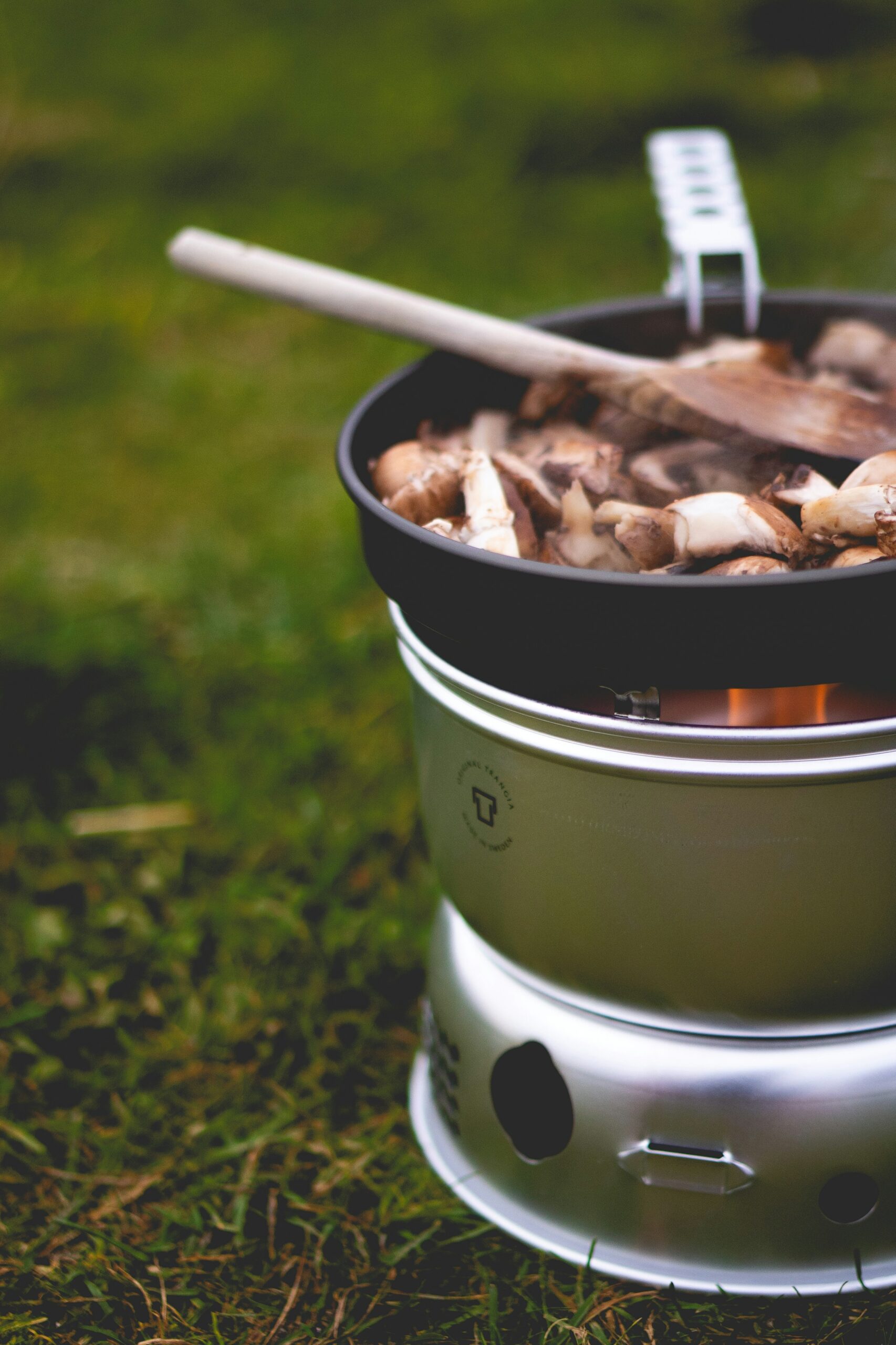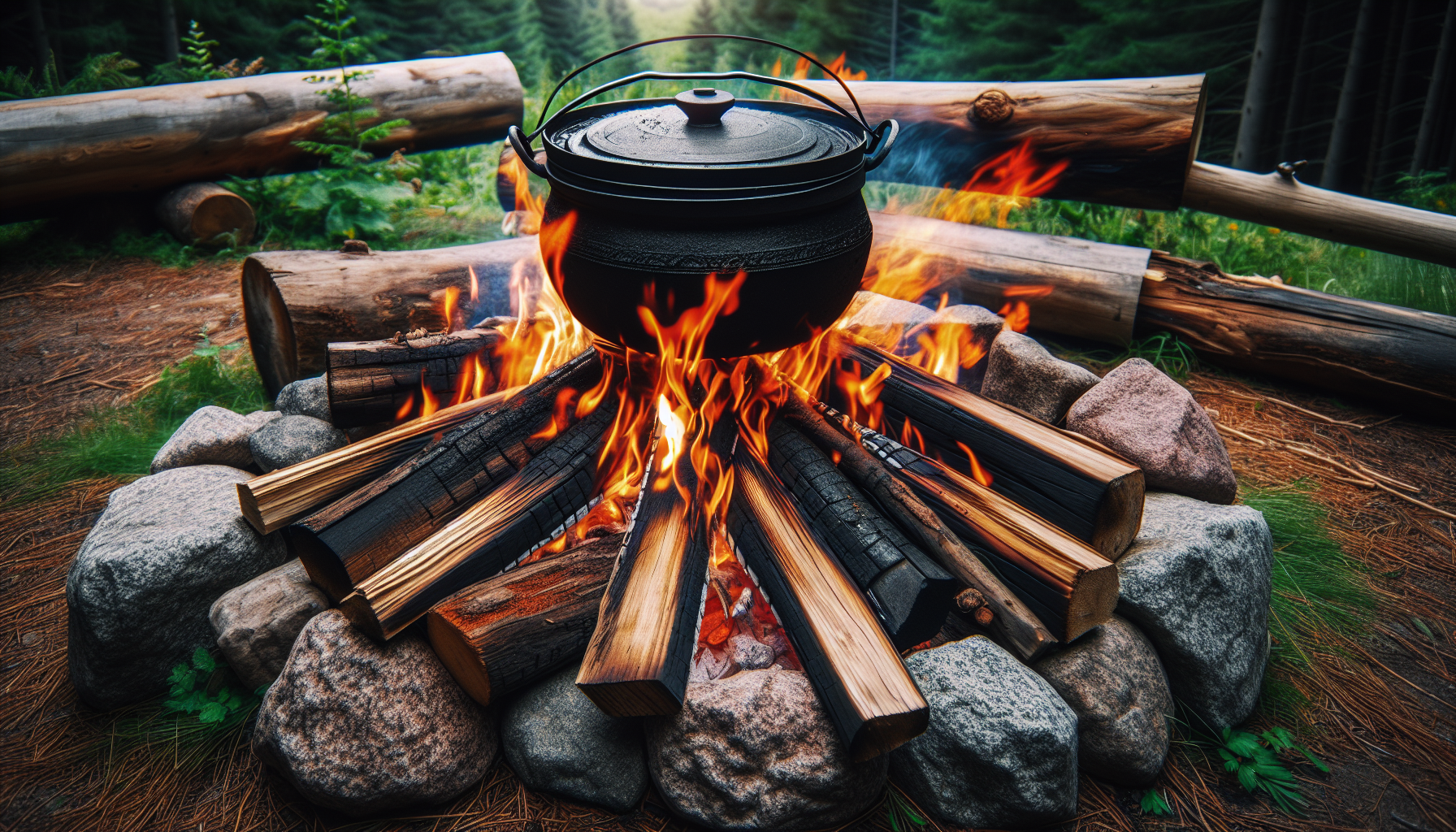Imagine a scenario where you find yourself without electricity or gas to cook your food. Perhaps you’re on a camping trip, experiencing a power outage, or simply looking for a sustainable alternative to conventional cooking methods. In this article, we will explore various techniques and creative solutions that allow you to cook delicious meals using alternative energy sources. From solar cookers to wood-fired stoves and even harnessing the power of nature, you’ll discover a whole new world of cooking possibilities that are not only practical but also environmentally friendly. Get ready to embark on a culinary adventure where ingenuity meets deliciousness!

Outdoor Cooking Methods
If you find yourself without electricity or gas, there are still plenty of ways to cook your food in the great outdoors. Whether you’re camping, hiking, or simply enjoying a backyard barbecue, these outdoor cooking methods will have you whipping up delicious meals in no time. Let’s explore some of the most popular options.
Campfire Cooking
A campfire is the quintessential outdoor cooking method, and for good reason. Building a fire not only provides heat for warmth but also creates an ideal setting for cooking a wide variety of meals. Whether you’re roasting marshmallows for s’mores or grilling juicy burgers, the campfire offers a versatile and traditional cooking experience.
To get started with campfire cooking, gather plenty of firewood and arrange it in a safe and efficient manner. Make sure to create a solid base using rocks or bricks, and then light the fire using newspaper or kindling. As the flames grow, you can place a grill grate or a cast iron skillet over the fire to start cooking. Remember to monitor the fire closely and adjust the heat as needed.
Wood-Burning Stove
If you prefer a controlled cooking environment, a wood-burning stove might be the perfect option for you. This portable stove provides a reliable source of heat and allows for more precise temperature control, making it great for simmering stews or baking bread.
To use a wood-burning stove, simply load it with seasoned firewood and light a small fire. As the wood burns, the stove will generate heat, and you can adjust the airflow to regulate the intensity of the fire. Once the stove is heated, place your pots, pans, or Dutch oven on the stove’s surface and cook your meals to perfection.
Rocket Stove
For those who prioritize efficiency and minimal fuel consumption, a rocket stove is an excellent choice. This stove design maximizes heat output while minimizing fuel usage, making it an environmentally friendly option.
To use a rocket stove, place a small amount of kindling or twigs in the combustion chamber and light it. As the fire grows, the stove’s unique design channels the heat upward, allowing for rapid and efficient cooking. You can place pots or pans directly on the stove’s top or use a cooking attachment designed for rocket stoves.

Solar Cooking
Harnessing the power of the sun, solar cooking offers a sustainable and energy-efficient way to cook your food. This method utilizes solar ovens or solar cookers to generate heat, allowing you to bake, roast, or even boil water using only the sun’s rays.
A solar oven works by trapping and concentrating sunlight to create an intense heat inside. These ovens typically consist of a reflective exterior and a dark interior chamber where your food is placed. As the sun’s rays enter the oven, they are absorbed by the dark surface, converting into heat and cooking your meal. A solar cooker follows a similar principle but often uses a reflective parabolic shape to concentrate sunlight onto a cooking vessel.
Hobo Stove
If you’re looking for a low-cost and easy-to-make cooking option, a hobo stove might be the answer. This simple stove can be assembled using basic materials commonly found in households or even while you’re on the go.
Creating a DIY hobo stove requires a few tin cans and some simple tools. Start by finding two cans of different sizes, one larger than the other. Remove the tops and bottoms of both cans, making sure to keep the side walls intact. Next, place the smaller can inside the larger one, creating a chamber for your fuel and cooking grate. Cut vents in the larger can for airflow and add a removable lid to control the heat. Finally, fill the smaller can with your chosen fuel, such as wood or charcoal, and light it.

Clay Pot Cooking
For a unique and ancient cooking method, consider using a clay pot. Clay pots have been used for centuries and are known for their ability to retain heat and distribute it evenly throughout the cooking process, resulting in flavorful and tender dishes.
Choosing the right clay pot is essential for successful clay pot cooking. Look for pots made from unglazed clay, as they provide excellent heat retention. Before using your clay pot for the first time, you’ll need to prepare it by soaking it in water for at least 30 minutes. This step helps prevent the pot from cracking due to extreme heat. After soaking, you can start cooking by placing the pot over a heat source, such as a campfire or stove, and following your desired recipe.
Dutch Oven Cooking
If you enjoy hearty and slow-cooked meals, a Dutch oven is a must-have outdoor cooking tool. This cast iron pot, with its thick walls and tight-fitting lid, creates an ideal cooking environment for soups, stews, and even baked goods.
When choosing a Dutch oven, opt for one made of seasoned cast iron. The seasoning process creates a natural non-stick surface and helps prevent rust. To further enhance the non-stick properties, it is recommended to regularly season your Dutch oven with oil. Before you start cooking, preheat the Dutch oven by placing it over hot coals or a campfire. Once heated, you can add your ingredients and begin the slow cooking process. The Dutch oven’s superior heat retention will ensure your dishes are cooked to perfection.

Brick Oven
For a more elaborate outdoor cooking experience, consider building your own brick oven. A brick oven provides superior heat retention and even heat distribution, making it perfect for baking pizzas, bread, and other delicious dishes.
Building a brick oven can be a rewarding project. It typically involves constructing a base, laying a brick dome, and installing an opening for the food. While the process can be time-consuming, the end result is a beautiful and functional oven that will elevate your outdoor cooking game. To use a brick oven, heat it by building a fire inside and allowing the bricks to absorb the heat. Once the oven reaches the desired temperature, you can place your food inside and watch it bake to perfection.
Bamboo Steamer
If you’re a fan of Asian cuisine, a bamboo steamer can be a fantastic addition to your outdoor cooking repertoire. This traditional cooking tool allows you to steam vegetables, dumplings, and other delicate dishes, preserving their nutrients and flavors.
To prepare a bamboo steamer, start by soaking the baskets and lids in water for about 30 minutes. This step helps prevent the bamboo from burning and infuses a subtle aroma into your food. Once soaked, line the baskets with lettuce leaves or parchment paper to prevent food from sticking. Place the steamer over a pot of boiling water, ensuring the water level is below the bottom of the steamer. Arrange your ingredients inside the baskets, cover with the lid, and let the steam work its magic.

Cast Iron Skillet
A cast iron skillet is a versatile and durable cooking tool that can handle high heat and go from stovetop to oven seamlessly. This heavy-duty pan is perfect for searing, frying, baking, and even roasting.
To care for your cast iron skillet, it is important to properly season and clean it. Seasoning involves applying a thin layer of oil to the skillet’s surface before and after each use, which helps create a natural non-stick coating. When cleaning, avoid using soap, as it can strip away the seasoning. Instead, use hot water, a scrub brush, and a little salt to remove any food residue. Once clean, make sure to dry the skillet thoroughly to prevent rust. With proper care, your cast iron skillet will become more non-stick and develop a beautiful patina over time.
Open Flame Grilling
Who doesn’t love the smoky flavors and charring that come from grilling over an open flame? Whether you’re cooking burgers, steaks, or vegetables, grilling brings out the best in your ingredients and adds a delicious touch of outdoor cooking.
When choosing a grill for open flame grilling, consider your needs and preferences. Options range from compact portable grills to large stationary models. Once you have your grill set up, start by lighting the charcoal or arranging the wood for your fire. Let the flames die down and the coals turn gray before placing your food on the grill grates. Remember to monitor the heat and flip the food as needed for even cooking.
Chafing Dish
A chafing dish is a convenient and versatile way to keep your food warm during outdoor gatherings or events. Whether you’re hosting a buffet-style meal or want to maintain the temperature of your dishes during a picnic, a chafing dish will ensure your food stays hot and ready to be enjoyed.
To set up a chafing dish, start by filling the water pan with hot water to create a gentle and even heat source. Place the food pans on top of the water pan and add your pre-cooked food. Light the fuel underneath the water pan, whether it’s a gel, wick, or sterno, and adjust the temperature as needed. Remember to regularly check and replenish the water and fuel to keep your food at the desired temperature.
With these various outdoor cooking methods at your disposal, you can savor delicious meals and embrace the joys of cooking in nature. Whether you’re using a campfire, solar energy, or specialized cooking equipment, the possibilities are endless. So go ahead, get creative, and enjoy the wonders of outdoor cooking without the need for electricity or gas!

